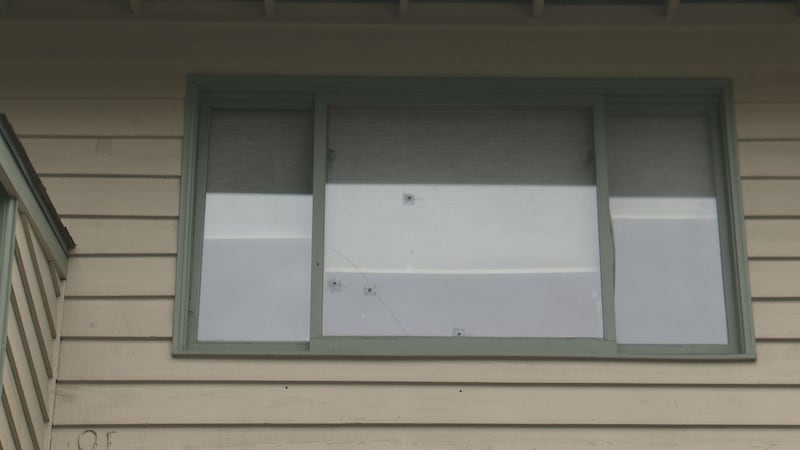Health Watch: Snuffing out spring allergies in Alaska
FAIRBANKS, Alaska (KTUU/KTVF) - Throughout Alaska, spring can be a time that brings people back to the outdoors, but it also brings allergies that impact a large number of residents, according to Dr. Anthony Bonitatibus, an allergist immunologist with Foundation Health Partners in Fairbanks.
“I would argue over 50% of people have some misery or some trouble in the springtime,” Bonitatibus said.
Those allergies can cause itchy eyes, sneezing, runny nose, and congestion, according to the Centers for Disease Control and Prevention (CDC).
The CDC also states that pollen in particular — of which parts of Alaska have been seeing high levels — is “linked to asthma attacks and increased hospital admissions for respiratory issues.”
“I’ve also seen a much higher rate of oral allergy syndrome,” Bonitatibus said. “That’s a problem that a lot of people with birch allergy will experience; itchy mouth, itchy throat, you know, sensation of an allergic reaction kicking in when they eat certain fresh fruits, like apples and cherries, peaches and pears.”
Birch is also a predominant cause of spring allergies in Alaska, he explained, but it can be accompanied by other pollen-producing plants, such as weeds and molds, and other trees.
Birch pollen is the most common allergen in many areas, due to the size and shape of the pollen, Bonitatibus said.
”If you look under a microscope, each pollen has certain shapes and pores to it, and ridges to it,” he said. “In Georgia — just as my reference — the pine pollen covered everything.
The pine is three times as large as birch, so it’s not as easy to inhale and trigger allergy as birch. So birch has the right size, it has the right abundance, and it’s easily airborne compared to some other larger pollens.”
According to Bonitatibus, some folks don’t initially experience an allergy to birch or other plants in Alaska when they first move to the state, or as younger children, because it generally takes a few seasons of exposure to the pollens to develop an immune system response.
“So if you’ve been here for a year and it wasn’t so bad, it might not be the same this year or next year,” he said.
The intensity of allergic reactions also varies for people, but factors such as high pollen counts – as Anchorage is currently experiencing – or dry, windy conditions, can intensify those reactions due to increased exposure.
“The pollen can travel for miles,” Bonitatibus said, “so you don’t even have to have a birch tree in your yard for it to bother you. It’s everywhere.”
There is a wide array of medications available to manage those symptoms, however, with many available over-the-counter.
“We prefer the second-generation antihistamines, because they’re longer-acting, and some of them are non-sedating. An airline pilot could take them,” Bonitatibus said, referring to “non-drowsy” medications for allergies. “That’s going to be your fexofenadine, your levocetirizine, cetirizine, loratadine. Those are the generic names of the four available ones.”
Nasal steroids can also be used to stabilize the reactivity of the immune system before exposure to an allergen, he said.
Similarly, there are nasal antihistamine sprays that can provide quick relief, and eye drops that can help with eye irritation.
“The last thing you can do, which might be the hardest, is to stop being allergic to this stuff, and that’s where immunotherapy comes into play,” Bonitatibus said. “That’s what the allergy field kind of specializes in.
“We have two forms of that,” he continued. “Sublingual immunotherapy is drops you put under your tongue. It’s just drops of what you’re allergic to.”
This therapy is used in April, ahead of allergy season in Fairbanks, as it is key to begin the therapy before the allergens come into play.
“Then there’s subcutaneous immunotherapy, which is allergy shots,” Bonitatibus said, adding that those are used to inject the allergen into the body in small doses.
“Over time, it can ‘break’ your allergy, so to speak,” Bonitatibus said. “That can be used for cat allergy, dog allergy, pollen allergy, mold, allergy, just about anything.”
The shots begin as recurring weekly, sometimes twice a week, but eventually drop to monthly, he said.
There is also some proof that being exposed to foods that cause allergic reactions can desensitize the body to the allergen-diminishing reactions, but that can be very dangerous and is more commonly done in teaching hospitals and medical centers.
While some Alaskans consume birch sap of honey made from plants such as fireweed, there’s a lack of proof of effectiveness, according to Bonitatibus.
“But I love the theory,” he said. “That’s exactly what we promote regular exposure to what you’re allergic to, to try to desensitize. It’s just with sublingual immunotherapy.”
Bonitatibus said in general, avoiding allergens as much as possible is key. This could mean limiting time outdoors, but it can also include wearing a face mask or portable HEPA filter, keeping windows closed, having a HEPA filter in your residence, and removing clothes that have pollen on them before getting in bed.
Removing pollen from the body can also help reduce exposure which can be done by taking a shower and using nasal rinse.
Copyright 2025 KTVF. All rights reserved.















